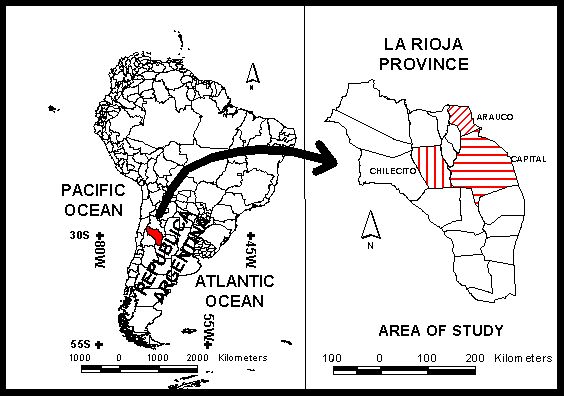
Saturday, 15 July 2006
142-4
Pathogenic Fungi of Olive Orchards in La Rioja Soils, Argentina.
Beatriz A. Pérez1, Gervasio Carboni2, Julio M. Sánchez2, and Gustavo A. Cruzate2. (1) INTA-IMYZA-Castelar, Las Cabañas y De Los Reseros CC 25, Castelar, Argentina, (2) INTA-CIRN-Instituto de Suelos, Las Cabañas y De Los Reseros CC 25, Castelar, Argentina
Olive is grown in Catamarca, La Rioja, Mendoza, San Juan provinces. Also, in Buenos Aires and Córdoba. In the last decade, new varieties were introduced and young orchards established. The objective of this study was to know the characteristics of the soils where the new olive orchards were planted and their main diseases. Since 1999, disease surveys were conducted in the departments Arauco, Capital, Chilecito (La Rioja). They are located in northwestern Pampean Hills: Capital department (silty plains, dunes, 20°C, 400-200 mm, soils grouped in Typic Torriorthents (LECM), Lithic Haplocambids (GGDC), and Typic Haplargids (GEFS). Arauco department has depressions, dunes, 18-20°C, 200-400 mm, Typic Torriorthens, Typic Torripsamments (LCBH), Typic Torrifluvents (LDEL). Chilecito department (Famatina system): high slopes and rocks, 18-20°C, 400 mm, dry, warm, rainy summers, Typic Torriorthents with rocks. The best soils are Typic Haplargids (A-B-BC-C profile sequence), IV land capability (deep, surface texture, average permeability, adequate humidity). Typic Torriorthents (A-AC-C profile sequence) has sandy-loam texture, and dangerous slopes. Lithic Haplocambids (A-B-R profile sequence) are deep, average permeability, hydric retention. Typic Torripsamments and Typic Torrifluvents have alluvial soils and torrid-arid climate (INTA-SAGYPA, 1989; Soil Taxonomy, 2003). The soils of Capital department are better for olive crop. Drying syndrome disease has been detected in different varieties of young plantations under modern irrigation technology. Laboratory analysis indicated the presence of different fungal species such as Fusarium, Phytophthora, Rhizoctonia, Verticillium associated to such pathology.

Back to 2.3P New Strategies for Management of Plant Pathogenic Soil Microorganisms - Natural Soil Suppression or Genetically Modified Plants - Poster
Back to WCSS
Back to The 18th World Congress of Soil Science (July 9-15, 2006)